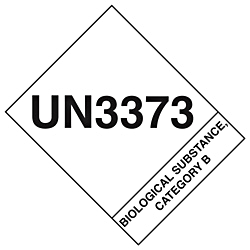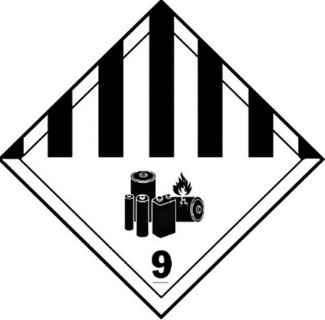Can I ship it safely?
A brief introduction to shipping dangerous goods.
The goods you were going to ship as normal may well be classed as hazardous. Fear not though, we’ve got you covered. Read on for more information on what counts as dangerous goods and what you can do to ensure your shipment is safe and compliant.
What counts as dangerous?
Well, it’s not just big barrels of chemicals. It’s any item or substance which, if not handled properly, could harm you, the driver, recipient, other shipments or the environment.
Some goods which are classified as hazardous materials may surprise you, such as aerosols, perfume or anything containing lithium batteries – like phones or laptops.
Dangerous Goods we can accept for shipment are:
- Lithium batteries
- Biological substances- Category B (UN3373) to support the healthcare industry, we offer worldwide service for Category B biological substances. Download applicable regulations and restrictions here.
- Dry Ice
- Fully regulated dangerous goods (including Radioactive material)
- Dangerous goods in limited quantities
- Dangerous goods in excepted quantities
- Radioactive material
Can I have more detail?
There are nine classes of dangerous goods, plus a few sub-classes. The class your shipment falls under will affect how you pack, label and transport it.
If you are shipping goods Internationally and are in doubt as to whether your shipment is acceptable, please contact TNT Customer Service on 13 11 50.
1. Explosive substances and articles
(Like fireworks or flares)
2.1. Flammable gas
(Like aerosols or camping gas)
2.2. Non-flammable gas
(Like compressed oxygen)
2.3. Toxic gas
(Like oxygen difluoride)
3. Flammable liquids
(Like solvents or paints)
4.1. Flammable solids
(Like matches)
4.2. Substances liable to spontaneous
combustion
(Like phosphorus)
4.3. Substances that emit flammable
gases when in water
(Like calcium carbide)
5.1. Oxidising substances
(Like fertiliser)
5.2. Organic peroxides
(Like fibreglass repair kits)
6.1. Toxic substances
(Like pesticides)
6.2. (Category A) Infectious substances
(Are known or expected to contain
pathogens)
(Category B) Biological Substances
(Like blood tests or medical trials)

7. Radioactive material
(Like smoke detectors)
8. Corrosive substances
(Like bleach or drain cleaner)
9. Miscellaneous
(Like bleach or drain cleaner)
Lithium Batteries (Class 9)

Click here for more information on transporting dangerous goods by Air.
Shipping Dangerous Goods within Australia?
TNT's qualified and experienced staff can assist with the transportation of dangerous goods within Australia. Please see Classes of Dangerous Goods for further information. Click here for Dangerous Goods Shippers Declaration form which is required when shipping dangerous goods within Australia by road, rail or sea. Click here for Dangerous Goods Shippers Declaration form which is required when shipping dangerous goods within Australia by air. Further information about the transport of dangerous goods can be downloaded here. If you are in doubt as to whether your shipment is acceptable, please contact TNT Customer Service on 13 11 50.
Are there any other labels to look out for?
If you spot any of the labels shown below on the items you want to ship, you’ll need to get in touch with us.
Where can I find more details?
If you’re not sure whether your shipment is dangerous goods or not, ask the manufacturer or supplier for a Material Safety Data Sheet (MSDS). If it contains a UN number, it’s dangerous goods. Alternatively, you can just contact us.
Whose responsibility is all this?
It’s the shipper’s responsibility to ensure dangerous goods are correctly declared, packed and labelled with the right documentation for the countries of origin, transit and destination.
What we can do is make it as easy as possible for you to follow these rules. With a bit of teamwork, we’ll get your dangerous goods shipped in no time.
OK, so how do I ship my dangerous goods?
There is no one standard procedure for shipping dangerous goods. It really depends on what you're shipping. So, get in touch with our experts using the button below. They will walk you through the shipping process. Job done.